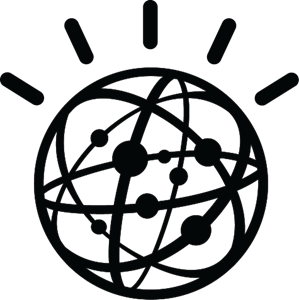IBM Watson Environmental Intelligence Suite: Complete Buyer's Guide
AI-driven platform for enterprise environmental compliance monitoring and regulatory intelligence
IBM Watson Environmental Intelligence Suite represents IBM's comprehensive AI-driven platform for enterprise environmental compliance monitoring and regulatory intelligence. It leverages advanced natural language processing and predictive analytics to address complex regulatory tracking and risk management challenges across multiple jurisdictions [180].
Market Position & Maturity
Market Standing
IBM Watson Environmental Intelligence Suite operates within IBM's broader AI and cloud computing ecosystem, leveraging the company's established enterprise relationships and technical infrastructure [180].
Company Maturity
IBM's established presence in enterprise AI solutions and extensive experience in regulatory compliance applications across multiple industries [180].
Industry Recognition
IBM's claimed positioning as a leader in AI-driven environmental compliance solutions, though specific analyst reports supporting this positioning require independent verification [180].
Strategic Partnerships
The platform's integration with IBM's broader technology ecosystem provides potential advantages for organizations already committed to IBM solutions [180].
Longevity Assessment
Strategic partnerships and ecosystem positioning within IBM's cloud and AI offerings suggest long-term viability [180].
Proof of Capabilities
Customer Evidence
IBM Watson Environmental Intelligence Suite has been implemented across manufacturing, energy, and finance sectors [180].
Case Study Analysis
Implementation evidence suggests the platform has been deployed in complex regulatory environments requiring cross-jurisdictional compliance tracking and sophisticated regulatory interpretation [180].
Market Validation
Market validation includes the platform's integration within IBM's broader Watson portfolio and continued investment in environmental compliance capabilities [180].
AI Technology
The platform's natural language processing engine enables sophisticated interpretation of regulatory documents and automated mapping of compliance obligations across multiple jurisdictions [180].
Architecture
Integration architecture supports connection with existing legal technology stacks, particularly contract management systems, document repositories, and regulatory databases [180].
Primary Competitors
Primary competitive alternatives include LexisNexis Regulatory Compliance for enterprise-grade regulatory tracking and mid-market platforms like Cimphony.ai [180].
Competitive Advantages
Extensive regulatory database coverage, sophisticated NLP capabilities for regulatory interpretation, and integration with IBM's broader technology ecosystem [180].
Market Positioning
Targets large enterprises requiring comprehensive solutions, while mid-market alternatives focus on practical implementation and measurable efficiency gains [180].
Win/Loss Scenarios
Selection scenarios favor IBM Watson Environmental Intelligence Suite when organizations require comprehensive regulatory coverage, have complex cross-jurisdictional compliance needs, and possess sufficient technical and financial resources for implementation [180].
Key Features

Pros & Cons
Use Cases
Featured In Articles
Comprehensive analysis of AI Environmental Law Monitoring for Legal/Law Firm AI Tools for Legal/Law Firm AI Tools professionals. Expert evaluation of features, pricing, and implementation.
How We Researched This Guide
About This Guide: This comprehensive analysis is based on extensive competitive intelligence and real-world implementation data from leading AI vendors. StayModern updates this guide quarterly to reflect market developments and vendor performance changes.
126+ verified sources per analysis including official documentation, customer reviews, analyst reports, and industry publications.
- • Vendor documentation & whitepapers
- • Customer testimonials & case studies
- • Third-party analyst assessments
- • Industry benchmarking reports
Standardized assessment framework across 8 key dimensions for objective comparison.
- • Technology capabilities & architecture
- • Market position & customer evidence
- • Implementation experience & support
- • Pricing value & competitive position
Research is refreshed every 90 days to capture market changes and new vendor capabilities.
- • New product releases & features
- • Market positioning changes
- • Customer feedback integration
- • Competitive landscape shifts
Every claim is source-linked with direct citations to original materials for verification.
- • Clickable citation links
- • Original source attribution
- • Date stamps for currency
- • Quality score validation
Analysis follows systematic research protocols with consistent evaluation frameworks.
- • Standardized assessment criteria
- • Multi-source verification process
- • Consistent evaluation methodology
- • Quality assurance protocols
Buyer-focused analysis with transparent methodology and factual accuracy commitment.
- • Objective comparative analysis
- • Transparent research methodology
- • Factual accuracy commitment
- • Continuous quality improvement
Quality Commitment: If you find any inaccuracies in our analysis on this page, please contact us at research@staymodern.ai. We're committed to maintaining the highest standards of research integrity and will investigate and correct any issues promptly.